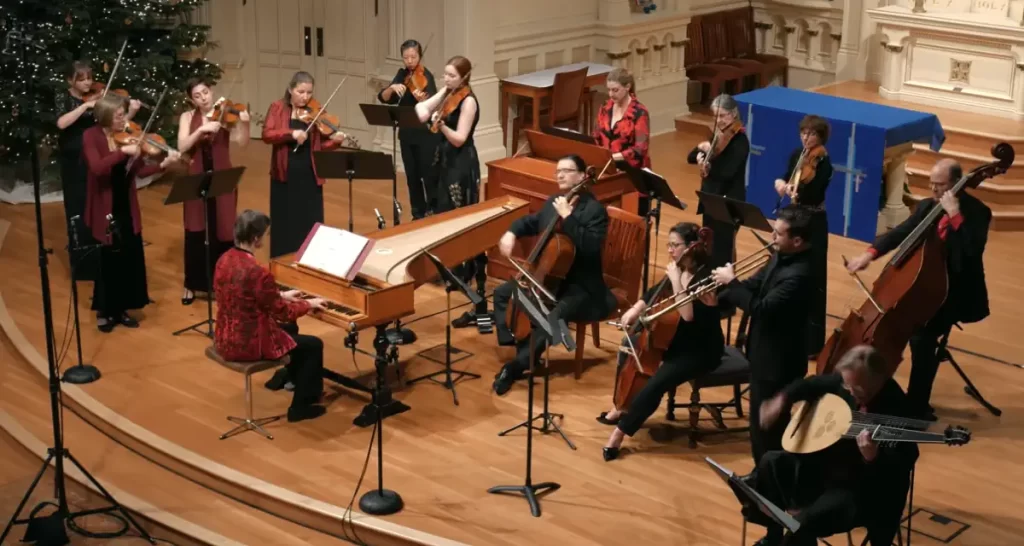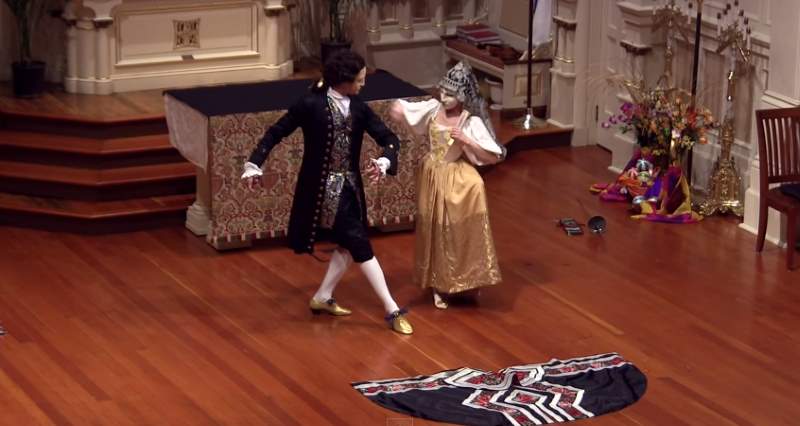San Francisco-based early music ensemble Voices of Music plays Italian composer and lutenist Andrea Falconieri’s Folias (La Folia), with the original instruments. Recorded at the “Art of the Recorder” concert, February
Andrea Falconieri’s Folias
Andrea Falconieri (1585 or 1586 – 1656), also known as Falconiero, was an Italian composer and lutenist from Naples. He resided in Parma from 1604 until 1614, and later moved to Rome, and then back to his native Naples, wherein 1647 he became the
The original title reads “Folias Echa Para Mi Señora Doña Tarolilla De Carallenos” (Primo libro di canzone, Naples, Paolini & Ricci, 1650). The composition uses the technique of “wandering variation,” pioneered by Monteverdi and others, in which the composer creates musical episodes in the form of brief excursions from the standard variation pattern. Falconieri also adds a brief adagio to provide a moment of harmonic and rhythmic contrast before the final variations.
The continuo group is here represented by the viola da gamba, organ, archlute, and triple harp: in the 17th century it was not unusual to have a rich and varied continuo group; each player improvises a part that creates a unique “voice” in the texture as well as blends together to form a complete accompaniment.
Performers
- Featuring Hanneke van Proosdij, recorder
- Carla Moore, baroque violin
- Elisabeth Reed, viola da gamba
- Rodney Gehrke, baroque organ
- Peter Maund, percussion
- Cheryl Ann Fulton, triple harp
- David Tayler, baroque guitar
Sources
- Andrea Falconieri on Wikipedia
- Chopin: Scherzo No. 3 [İlyun Bürkev] - September 14, 2024
- César Franck: Violin Sonata [Argerich, Capuçon] - September 8, 2024
- Beethoven: Piano Sonata No. 23 “Appassionata” [Anna Fedorova] - September 7, 2024

